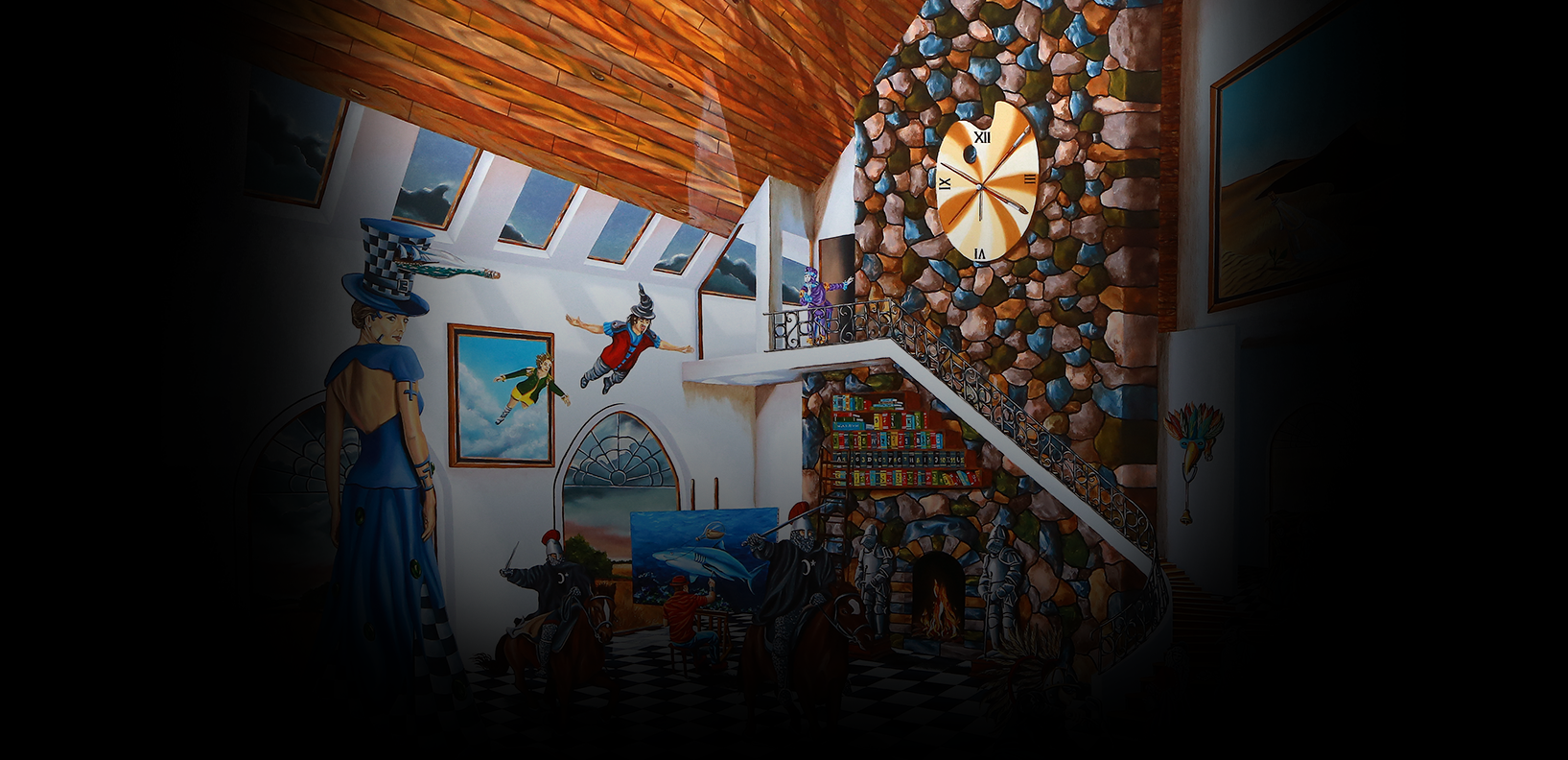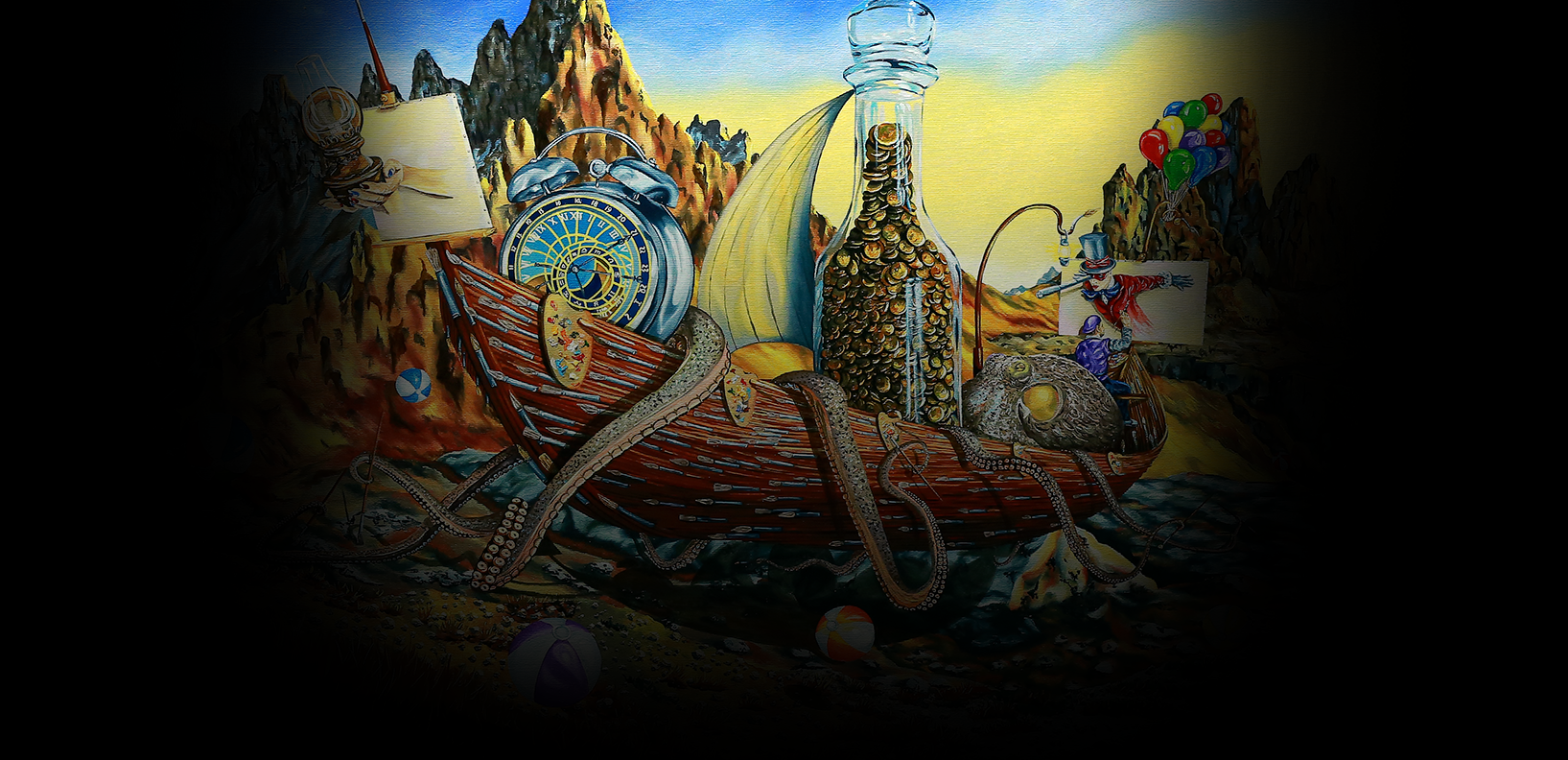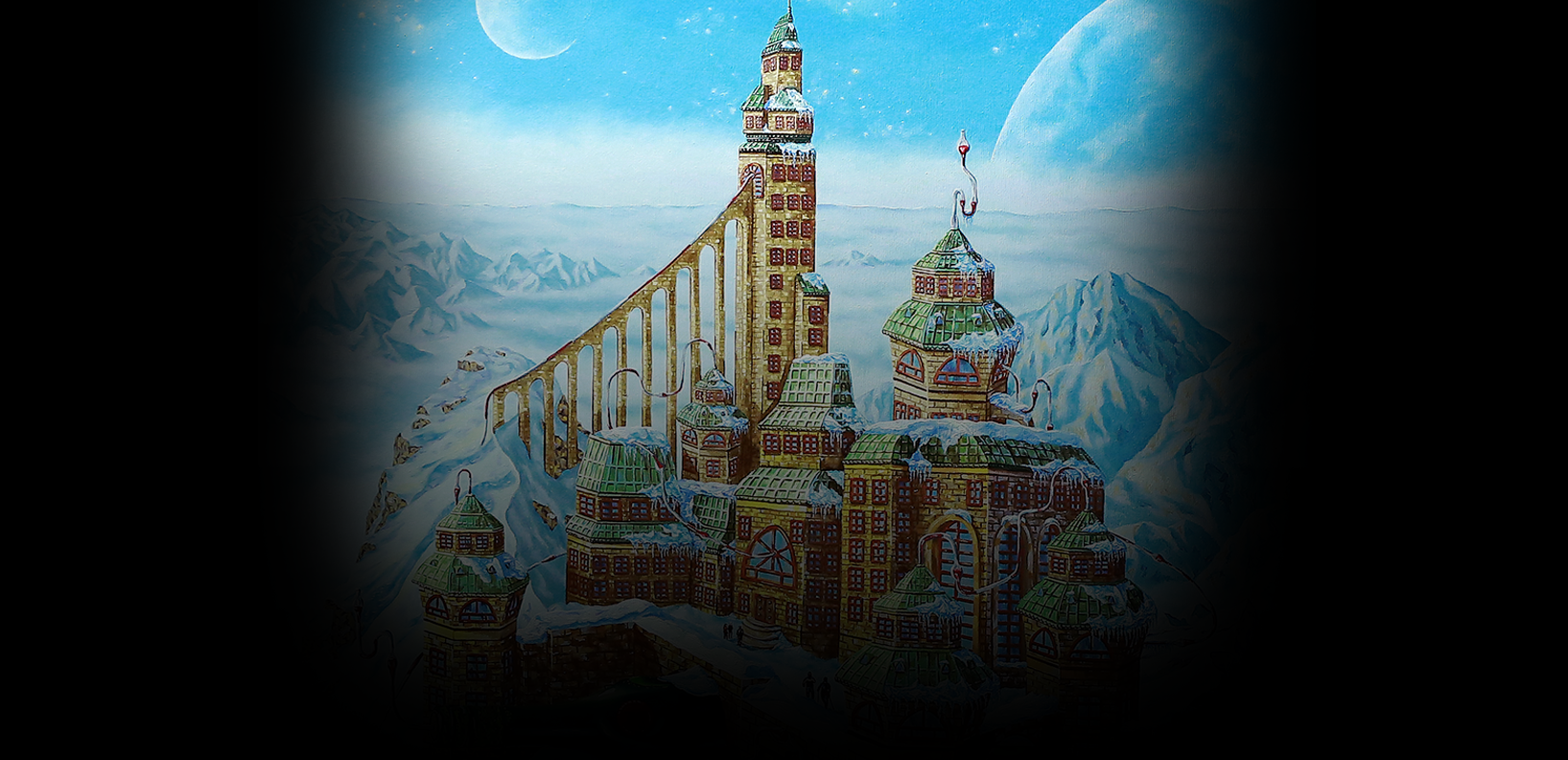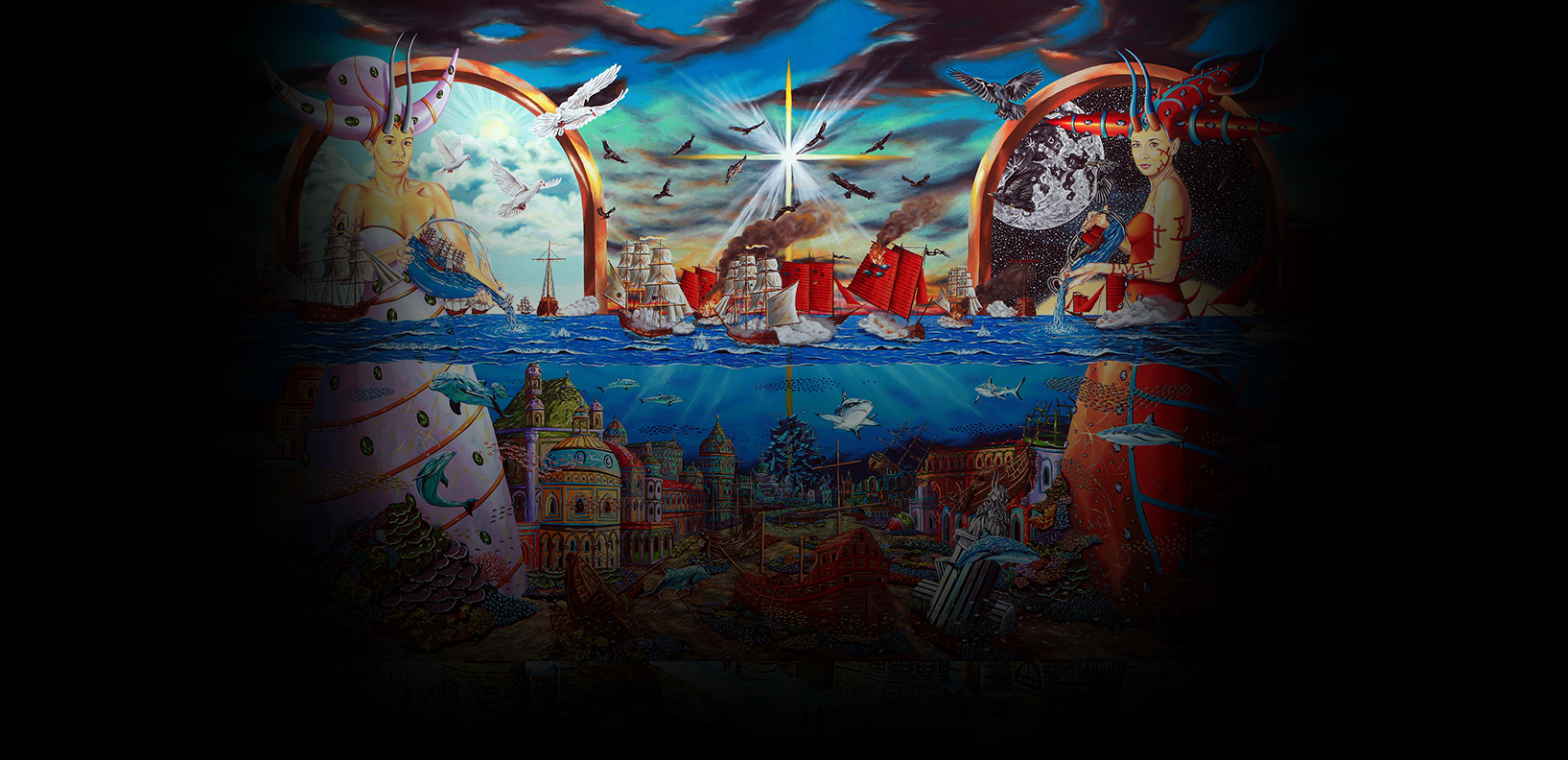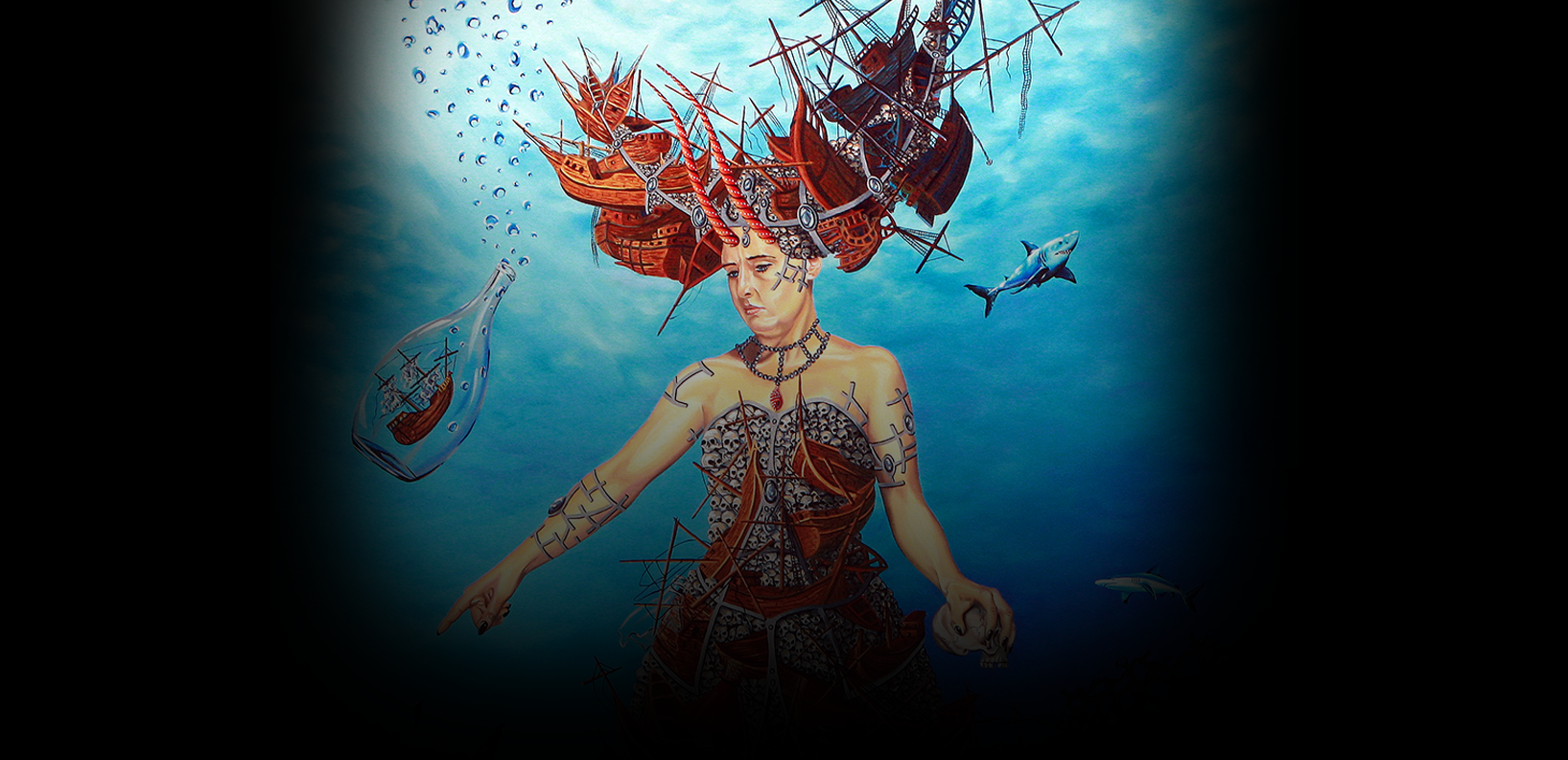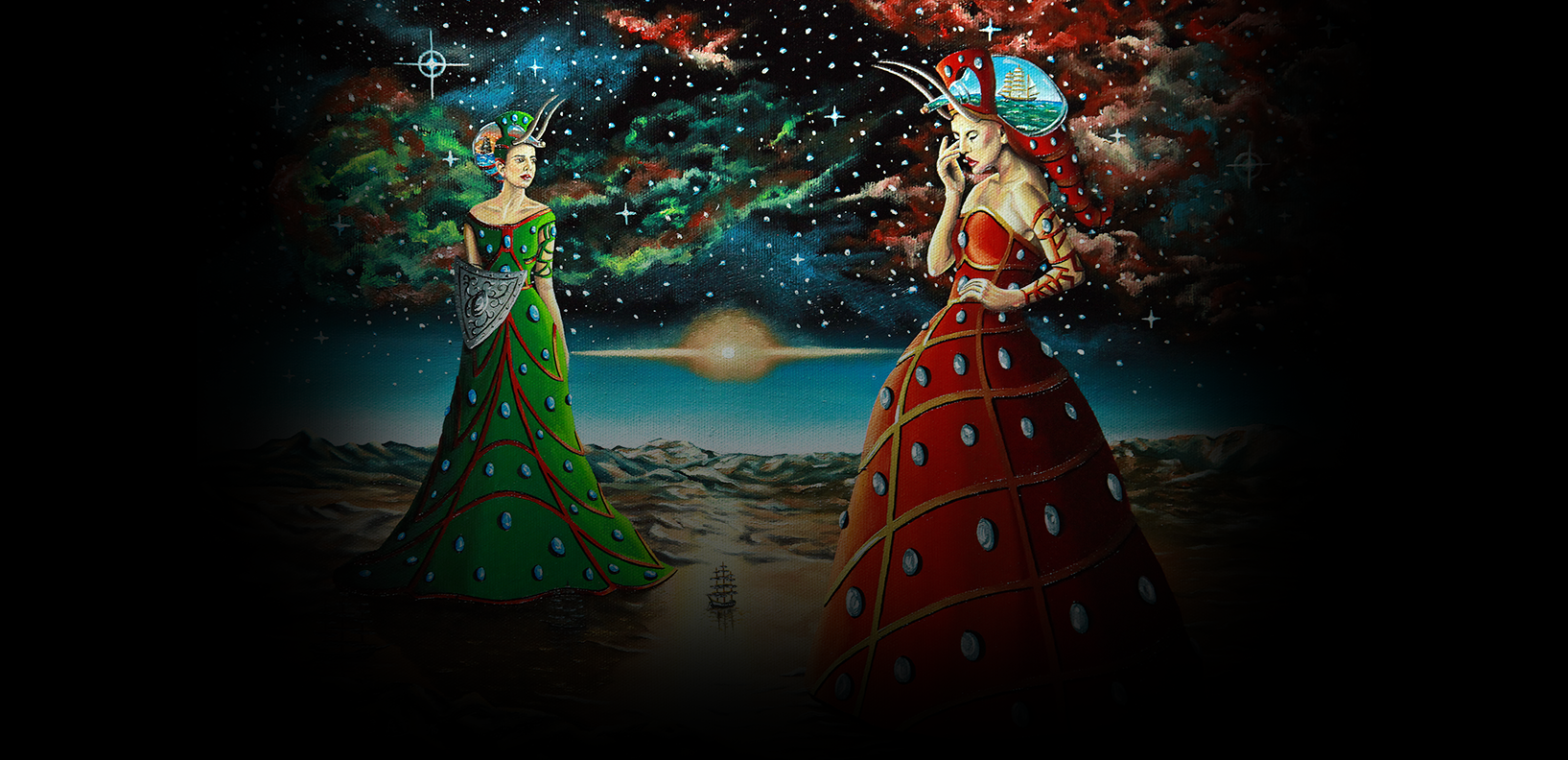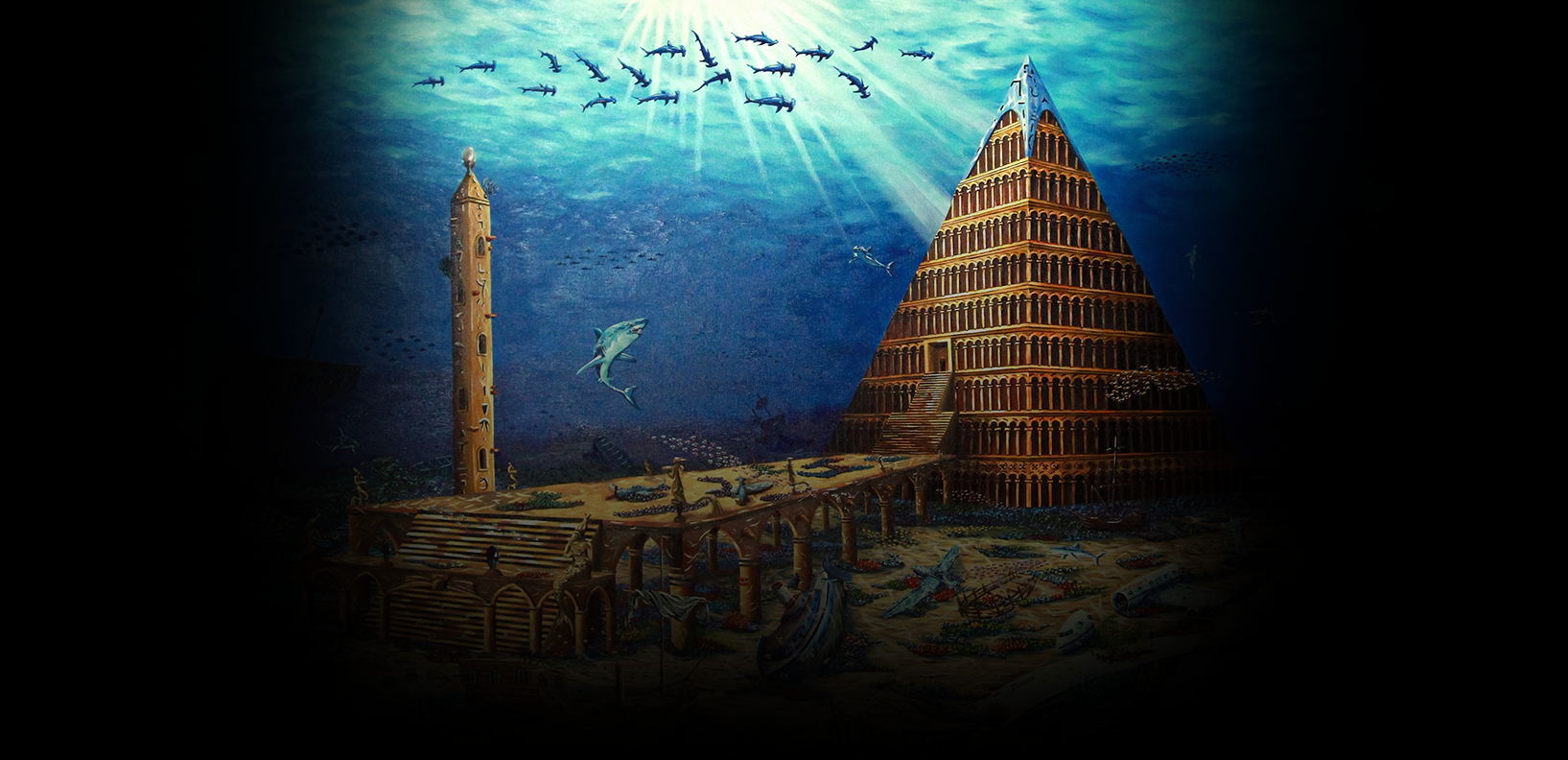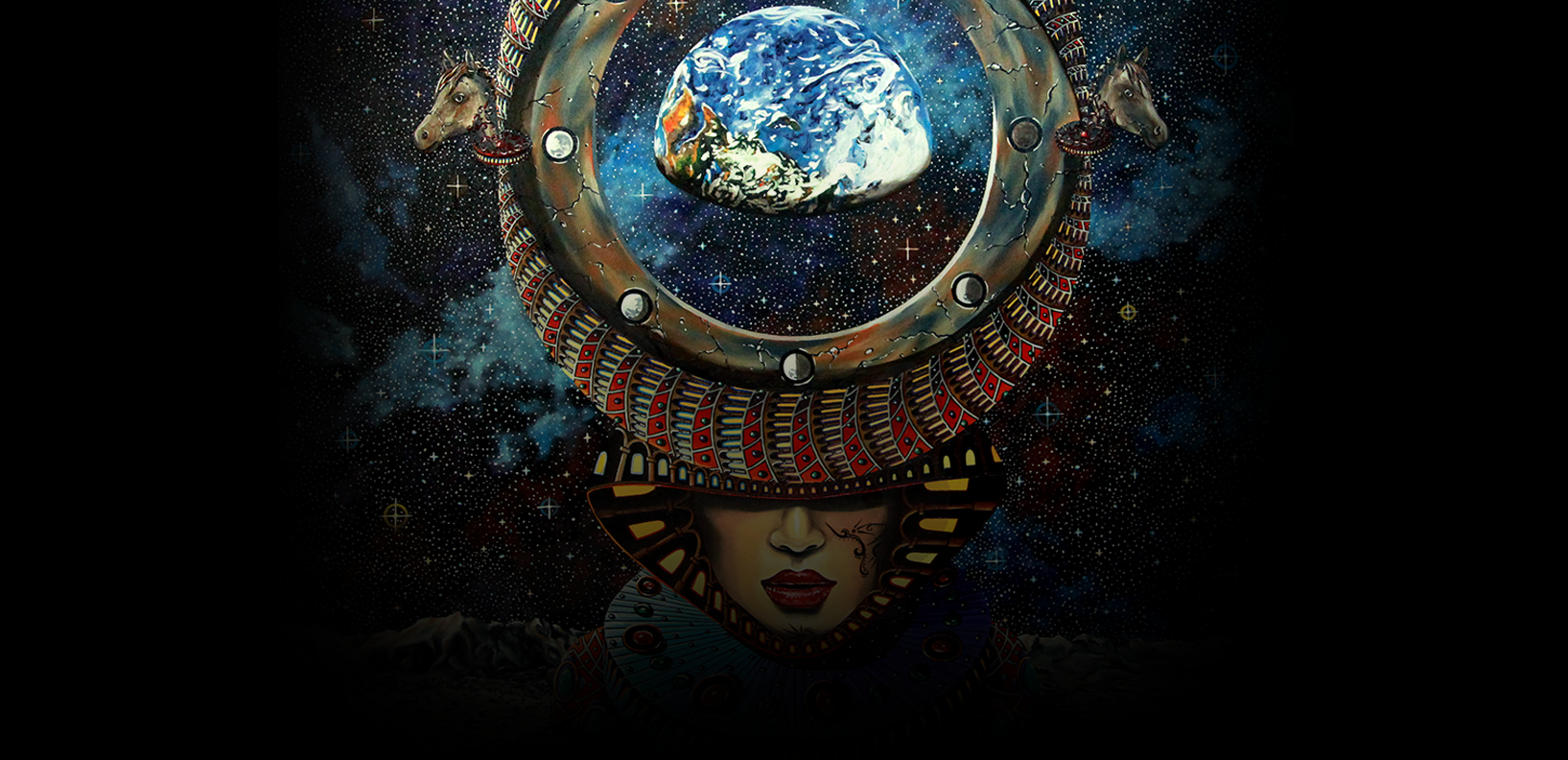In 2009 Krzysztof Żyngiel was considered to be one of the 13 most popular and accomplished Polish painters of the young generation. In 2010 he was officially recognized as a prominent artist among the world’s most accomplished painters. www.galeriamalarstwa.za.pl
Krzysztof Żyngiel known as Animus is an artist painter of Polish and Lithuanian origin. He was born on 2nd September 1982 in Częstochowa. From early childhood throughout his teenage years, he drew and painted a lot and made his first attempts at sculpting. He completed Primary School No. 1 in Częstochowa. He participated in many municipal art competitions, winning numbers of prizes and awards; he was also awarded some prizes and received honorable mentions in national and international events. Then he started Dr. W.Biegański Secondary School of General Education No. 3 in Częstochowa.
He was the first-place winner in the Polish competitions “Architecture of My City” and “A Landscape of Poland – Tradition, Present and Future”; several times he was awarded first prize in various art contests, for example: “Do Not Smoke”, “Landscapes of Jura”, “Earth Day”; he also won honorable mention in the Earth Day celebration event.
After finishing secondary school during the years 2000/2001, Krzysztof Żyngiel started college by attending Jan Długosz Academy in Częstochowa. He participated in many exhibitions. He received honorable mention from Tomasz Sętowski for his drawing presenting “a fantastic vision of Baroque woman’s bust” (“Gazeta Wyborcza”, article entitled “Three Hours of an Artist’s Life”, 17th January 2005). He graduated from Jan Długosz Academy in Częstochowa in the academic year 2005/2006 with a degree of Master of Fine Arts in Painting after he defended his MA thesis receiving a “very good” grade and a Degree Certificate (Graduation Diploma) with honorable mentions.
Each year the artist donates one of his paintings to charity, but major works of Krzysztof Żyngiel have been bought by private collectors in Warsaw, Rzeszów, Katowice, Cracow, Kalisz, Kielce, Przemyśl, Gdynia, Łeba, Zakopane, and also from abroad: Spain, the USA, Germany, Sweden, Italy, Russia, Turkey or Tunisia.
Some words about the artist
Krzysztof Żyngiel is a fifth-year student of Jan Długosz Academy in Częstochowa in the Faculty of Fine Arts majoring in visual arts. I have found the works of this talented young artist to be close to my creations as both of us work in the same style, which is magical realism.
My frequent artistic contacts with Krzysztof Żyngiel have given me an opportunity to compare him with other young painters. I am absolutely sure that his works are much more distinguishable from other artists. He demonstrates skills and a perfect technique by using a monochrome color scheme, I would even say a minimalist, ascetic pattern, and recently also polychrome painting.
His paintings are rich in symbolism whereas Latin utterances supplement the narration and allow us to perceive them from different levels. Visions of demonic women on the canvas symbolize the foundations of imaginary cities.
Dead characters mingled with living people symbolize the triumph of life over death. Meticulousness and attention to details, carefulness, perfect technique, outstanding imagination and patience remind me of myself. I am proud that another remarkable fantasy artist was born in my hometown and I do hope we will hear much about him in the future.
|
Tomasz Sętowski Częstochowa, 10.05.2006 |
Krzysztof Żyngiel is a young artist strongly allied to the movement of painting grounded in the surrealist esthetics. He is obviously fascinated with the painters of Salvador Dali’s circles. The image of a city is particularly important to Krzysztof Żyngiel in his creation: a medieval city with its walls, gates, bastions, defensive towers, densely huddled houses, endless bridges and stairways climbing up to nowhere. There are also male and female characters transformed by the painter in a kind of anthropomorphic architecture incorporated in the structure of this mega-fantasy-polis.
These naked, or half-naked people are merged, partially or fully, into the architecture of fantastic cities. Each picture composition is complex and extensive, usually of a limited range, sometimes even monochromatic colors. Paintings feature specific surreal scenes, telling a peculiar fairy tale about flying cities, dashing carriages, carts and wagons, military parades, flying birds and airships. Terror of Dracula, a pursuit to cover all the surface of canvas with some details, forms or elements of architecture or city wall consequently leads to creation of a picturesque labyrinth displaying some demonic properties, building up atmosphere of threat, suspense and tension as before an impending disaster which bears resemblance to the Biblical tale of the destruction of Sodom and Gomorrah.
Megalopolises depicted by Krzysztof Żyngiel are often located at the tops of volcanoes or on rocks. The young artist uses metaphors and symbols to title his works and express their meaning, for example: “The Four Horsemen of the Apocalypse on Paymon ‘s Sea, “Mystic Ball”, “Tryptic – the Eternal Kings of the World”, “Demonic Speed”, “Ellipsis of Time”, “The Magic Palantir Portending the Future”, “The Army parading through the Streets of the Barbatos’ s City. In the collection of the author’s paintings there are also some with direct titles, for example “Trumpeting the Return of the King”, ” A Prophetic Dream”, “A Gate to an Old City Ruins”. Krzysztof Żyngiel’s paintings are to a certain extent related to literature and are thus more readable and poetic. Also, enriching color values, in particular color temperature subtleties, will give a new glamorous and alluring space to the works. At present we can observe interesting creations by a young artist who is working out a graphical language of his own and searching for his own artistic cosmos.
|
Marian Panek Częstochowa, May 2006 |
Krzysztof Żyngiel about himself…
“Abandon all your beliefs,
Leave the world you have lived in so far behind this door,
You are entering a world of magic you have only ever dreamt of…”
Visionary “Apocalyptic cities” often take a form of anthropomorphic bodies that are neither bulky nor clumsy, they become slender, but do not lose their rigidity. The monumental megalopolis in which I depict figures, their hands and faces amalgamated with architecture may be called a painted melic poem. By using rich symbolism, thoughts and Latin sentences complementing the narrative, I am able to express myself and share my visions with the audience. I often paint cities that have various architectural solutions. I combine buildings with defensive walls (to protect us against evil), city gates (hiding some secrets); I present old residential houses. Most of the time they are lifeless and departed. Defensive areas, palaces, manors and sacral buildings that used to witness glamour and allure, now are asleep and buried.
Burning sulfur and fire that rained out of heaven on Sodom and Gomorrah can be compared to today’s fires, fights and wars all over the globe. Bombing, terrorist attacks, deadly acts of terror, missiles and explosives hurting people like swarms of bees – we are constantly being destroyed by the aggression. I am upset and threatened by a vision of the cities that I get in my head like a snapshot from a camera. It is hard to remove this view from my mind. When I see the scenes of death and extermination which I illustrate using lively or monochromatic colors, I am horrified. I know it’s a gift I have to live with. We must remember that wherever there is evil, there you will also find the good. Therefore, there is hope, a prayer and a pursuit of a better tomorrow. The good can always be uncovered, yet it requires deeper understanding and insight into one’s own mind and soul.
|
“Pulhrum in natura jacet, et solum mundum visum et comprehensum revelare id potest” |
||
|
Krzysztof Żyngiel, 2003 |
||
The art presented by me is supposed to stimulate not only senses, but also the intellect. The meticulousness, realistic sketching that I start with and precision and technique I have been developing for years, all are used to introduce the viewer into my world. By making references to surrealism or magical realism, I create a message that is very important to me. It is hidden under the colors, emotions at work and symbols presented on the canvas. The references are not only to oneiric scenery. Our egos are filled with and defined by the surrounding reality. This reality is a boundary between material existence and fantasy which gradually substitutes the reality. Symbols used in the compositions presented in the paintings convey supernatural, universal, real and intricate messages. The final effect of my creations is the presentation of a material and spiritual world. The painting work is not a mere memory to me; it’s a vision, a perception of life dilemmas and a way to contact the real world. The very pattern of symbols, meanings and the location of elements forming an undivided wholeness is not coincidental and indeed, it frames a specific iconography of my apocalyptic works. Beautiful, cosmic, catastrophic, metamorphic and not least of all, logical depiction of an “Apocalyptic Megalopolis” makes the audience enter a magical literary world, while at the same time destroying their views on the false truth of contemporary society. The major purpose of my artistic conception illustrating the collapse of contemporary buildings, self-destruction, loss of personality, animal instincts, degeneration of feelings, love and reflections is to open YOUR EYES, MY VIEWER, to show you how low we have dropped and to provoke you to act and improve the world. One day we can wake up and see the remains of our houses that were flooded, destroyed or lay in ruins. I wish both you and myself not to underestimate and despise the messages sent by the media. Let us all try to empower the good in us and to focus upon the fragility of our existence!
|
Krzysztof Żyngiel, 2009 |
“Taming of the Demons”
The fantastic art capturing our imagination originates from the artist’s subconscious. However, at the moment of illustrating images drifting out from there, a deliberate choice of motifs, symbols, colors and compositions is of comparable importance. Nevertheless, there is a third factor originating from the super-conscious that makes a piece of art a masterpiece, as only this is the way to touch the energy of the Absolute.
Krzysztof Żyngiel is a young artist and he doesn’t assume the right to create a masterpiece; currently he is at a stage of searching for the most adequate way to express the visions of his imagination, yet, in every attempt to visualize the oneiric images on the canvas he apparently heads for the regions that oscillate in the rhythm of the cosmos.
Such an approach poses a number of dangers. A price to be paid is anxiety or even terror caused by the hugeness and depthness under a volcanic-like pressure of the apocalyptic visions trying to free themselves, full of demons and angels of death and destruction.
The tension present in Krzysztof Żyngiel’s paintings is so strong that it does not allow for any formal coquetry, as in Sętowski’s works. On the other hand, it does not surrender to the demonic domination as in Beksiński’s art. Thus, Żyngiel’s paintings cannot be considered in simple categories applied for the assessment of fantastic art, although, if any formal associations were to be indicated here, only the protagonist of surrealism, Salvador Dali could be mentioned, yet in the period before he was captured by the machinery of commerce.
The issue of “style” in the works of Krzysztof Żyngiel remains open as he has more to communicate than only to astonish and hypnotize the audience with a compilation of overdrawn and deformed motifs, or to induce a thrill of horror. This wideness of style is actually an advantage in this case since excessive adherence to a distinctive mannerism, in particular in surreal art, may lead to hardly innovative repetitions of the same symbols, motifs or illustrative representation of the same ideas.
Whereas Beksiński engaged into a dangerous contra dance with “tamed” demons and Sętowski has softly caressed and put makeup on them, although the high quality of their art must not be discredited, Żyngiel, by paying tribute to the demonic powers has managed to temper and suppress the beasts, thus weakening their natural demonic evil and terror, at least to some extent.
Krzysztof Żyngiel captures demons against a background of a wide, open space of surreal landscapes enriched with chimeric, sometimes anthropomorphic architectural labyrinths. Such scenery is a perfect environment for demons that are always presented as female angels of death and destruction.
There are no doubts about the gender of these apparently female characters heralding death unlike in Malczewski’s pictures of hermaphrodite Thanatoses. Żyngiel clearly defines the gender. Using symbols, he affirms a thesis which is deeply rooted in our culture that the personification of evil is not coincidental and the evil must pay for its success and be well camouflaged as a weak and thus harmless person or an advance guard of the absolute Good, namely an angel. However, female angels in Żyngiel’s works have both the qualities of enduring evil represented by the bodies that are turning to stone and become a wall, and, on the other hand, also the qualities indicating their satanic provenience.
Rivalry and opposition between the durability of the demonic evil and fragility of the good appear in Żyngiel’s paintings in one more form. We can see firmaments symbolizing a space of freedom suddenly covered with a frightening shade. Demons are descending to Earth, Apocalypse is coming, a curtain falls and hides the horizons to prevent people from requesting the divine absolute for help. Trumpets announce destruction, the air becomes dense, all colors disappear. The crowds led by the demonic power are marching for unknown purpose and gathering in front of the beasts. These beasts, not God, will judge their fate in a devilish manner now: good will be condemned and evil praised.
Evil is increasingly often glorified by the modern civilization. The message sent by the artist is clear: there is little time left before demons get their prize. I hope that at the next stage of his artistic development, the painter will reveal to us what kind of prize he means.
I suppose and leave it to Krzysztof as my perception, that this will be a garden of continuous and narcotically destructive delight where, amongst orgiastic paroxysms, we will beg for the end; or enormous and excessive, albeit vague satisfaction with material well-being, where buried alive under piles of trash of civilization, we will wait for the coming of the messiah to free us.
|
Konrad Grzywiński Art critic and historian Hamburg, 06.01.2010 |
Krzysztof is at the beginning of the path leading to a mysterious and never explored world of imagination. His painting technique has huge potential and, on the other hand, is a place of internal search of forms and contents that bring us closer to the unknown corners of human soul with all its fears and dreams. Krzysztof intentionally tears the harmony of his pathway to perfectionism by inserting his own observations of the dark sides of human psyche expressed as a subtle balance between good and evil, feelings and passion, fear and happiness. His paintings reflect the evolution of his ideas from catastrophism to counterbalanced images where a vision of a hopeful future prevails, which, however, are influenced by symbolism so common in Krzysztof’s creations. Comparisons to any other painter are pointless since, with every new painting, Krzysztof is submerging himself into an unknown, imaginary world and never reproduces the observations and views already experienced.
|
Piotr Paweł Urbanek Art merchant |
